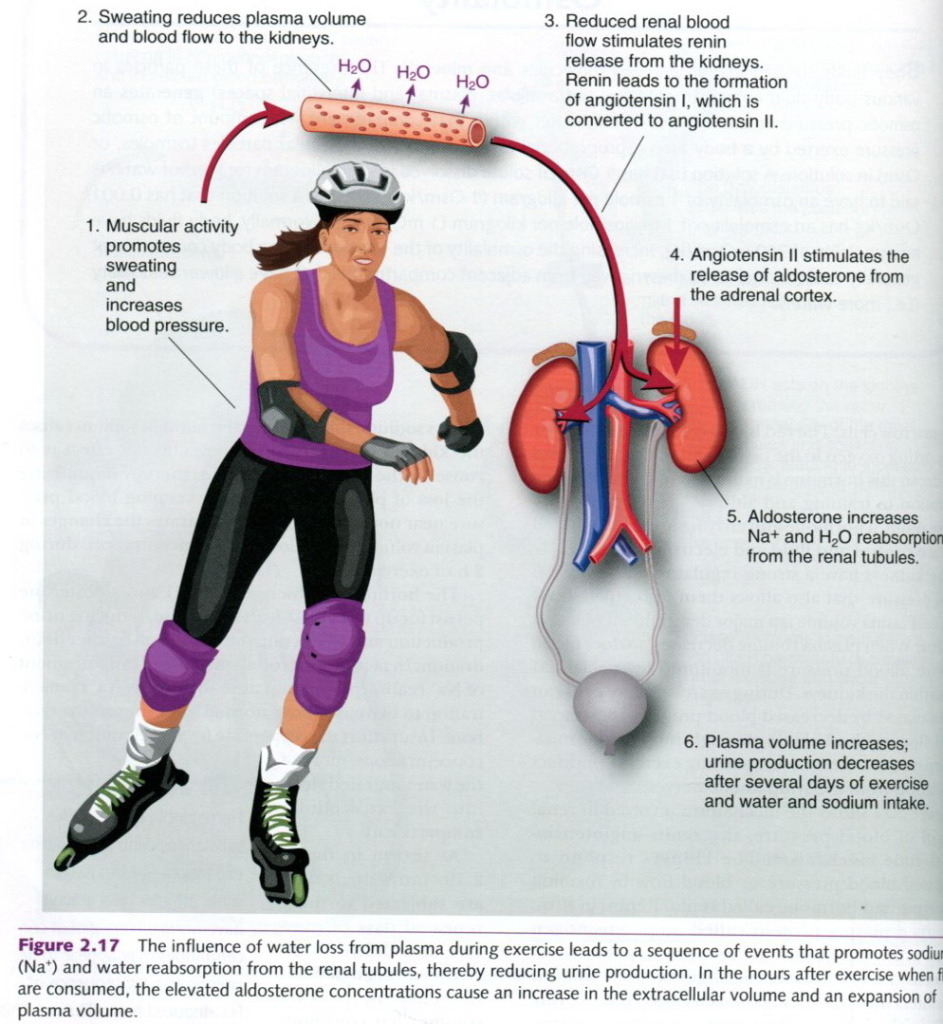 |
| Previous Image | Next Image |
| Description: Figure shows the mechanism involved in renal control of blood pressure, the renin-angiotensin-aldosterone mechanism. The kidneys respond to decreased blood pressure or blood flow by forming an enzyme and hormone called renin. Renin, in turn, converts a plasma protein called angiotensinogen into an active form called angiotensin I. In the blood, angiotensin I is converted to angiotensin II when it encounters the enzyme angiotensin converting enzyme(ACE) in the lungs. Angiotensin converting enzyme inhibitors are a class of drugs used in the treatment of high blood pressure. They lower blood pressure by blocking, or inhibiting, the conversion of angiotensin I to angiotensin II. Angiotensin II acts in two ways. First, it is a potent constrictor of blood vessels. Through this action, peripheral resistance increases, which raises the blood pressure. The second job of angiotensin II is to trigger aldosterone release from the adrenal cortex. Recall that aldosterone’s primary action is to promote sodium reabsorption in the kidneys. Because water follows sodium, this renal conservation of sodium causes the kidneys to also retain water. The net effect is to conserve body’s fluid content, thereby minimizing the loss of plasma volume while keeping blood pressure near normal. Picture Stats: Views: 1624 Filesize: 223kB Height: 1024 Width: 943 Source: https://biology-forums.com/index.php?action=gallery;sa=view;id=19427 |
